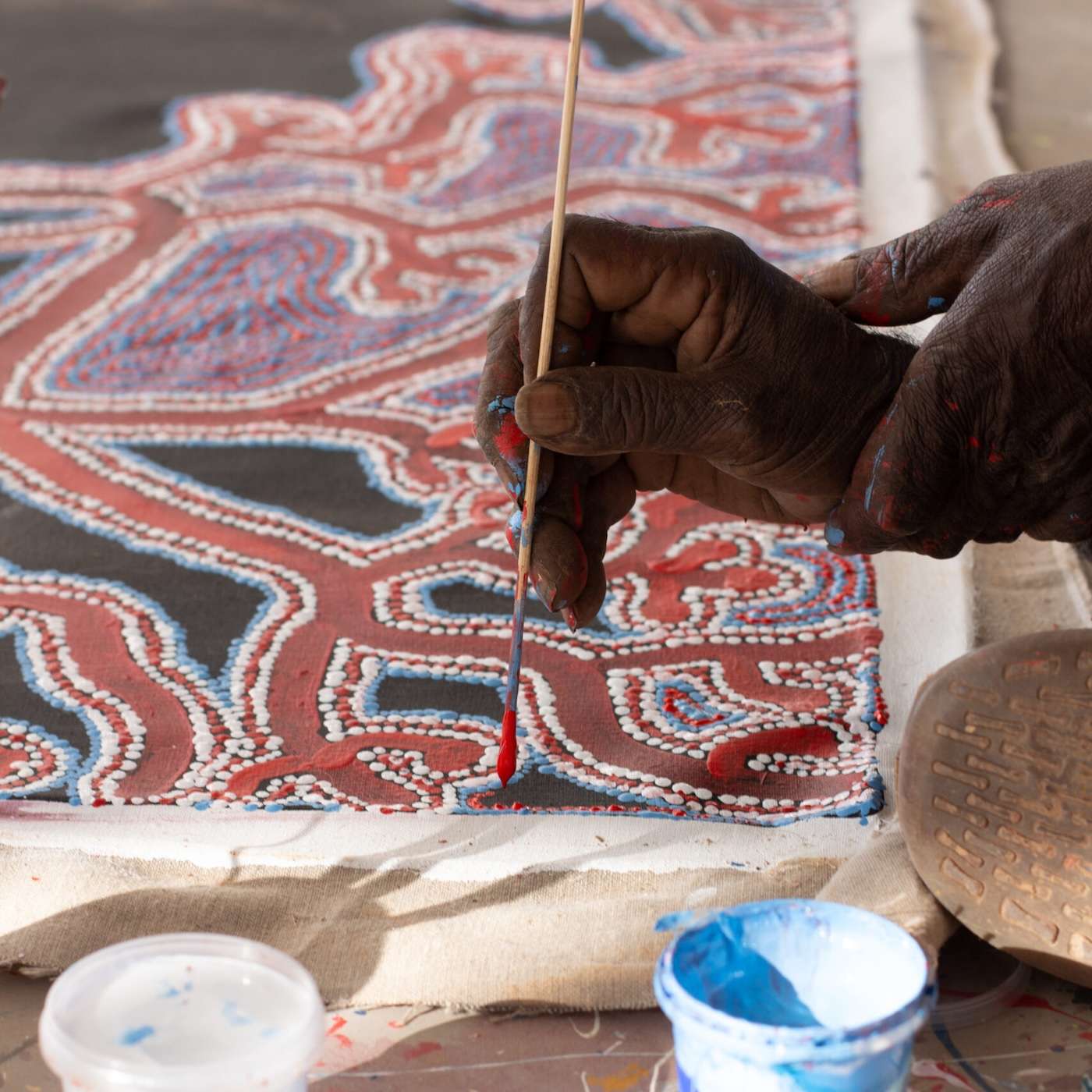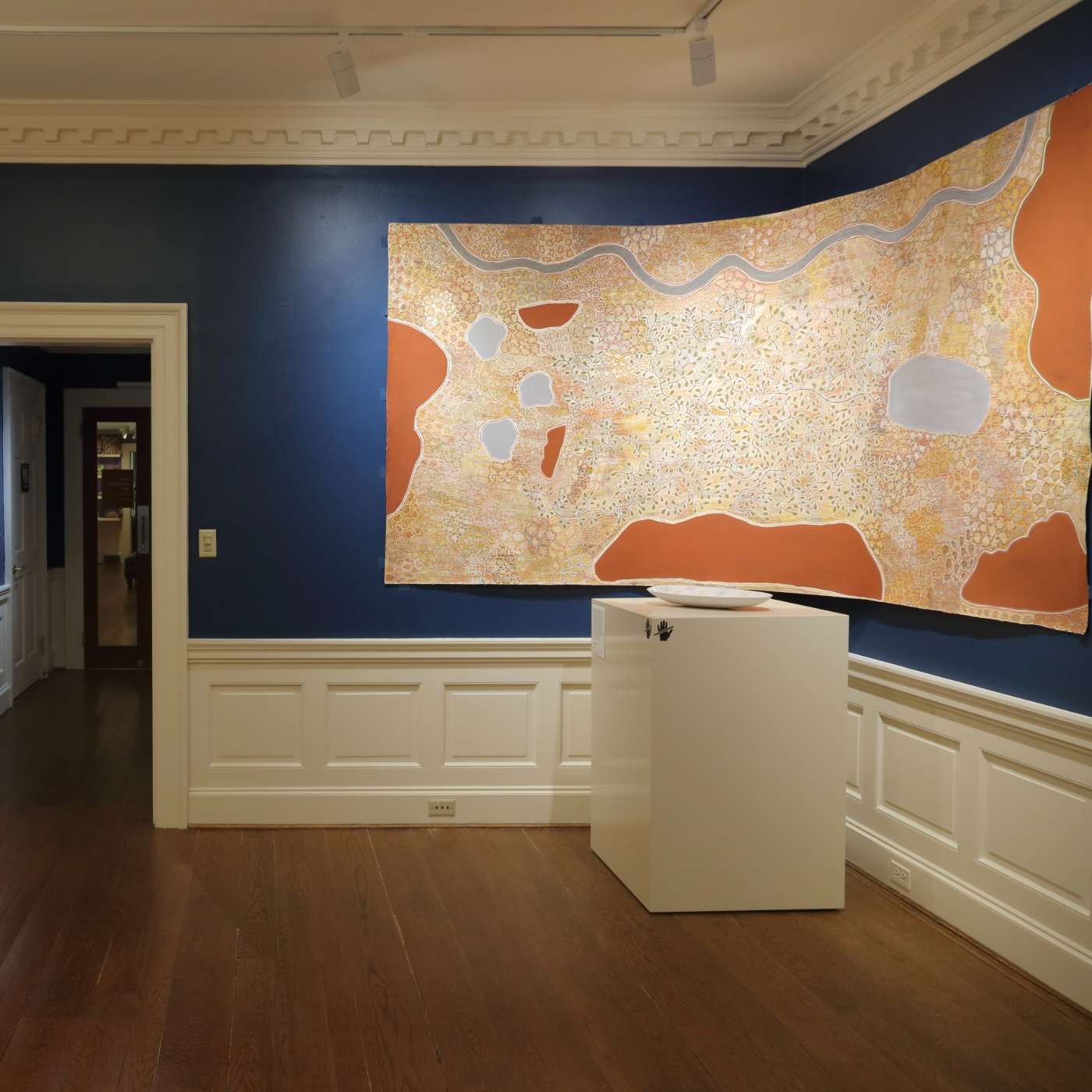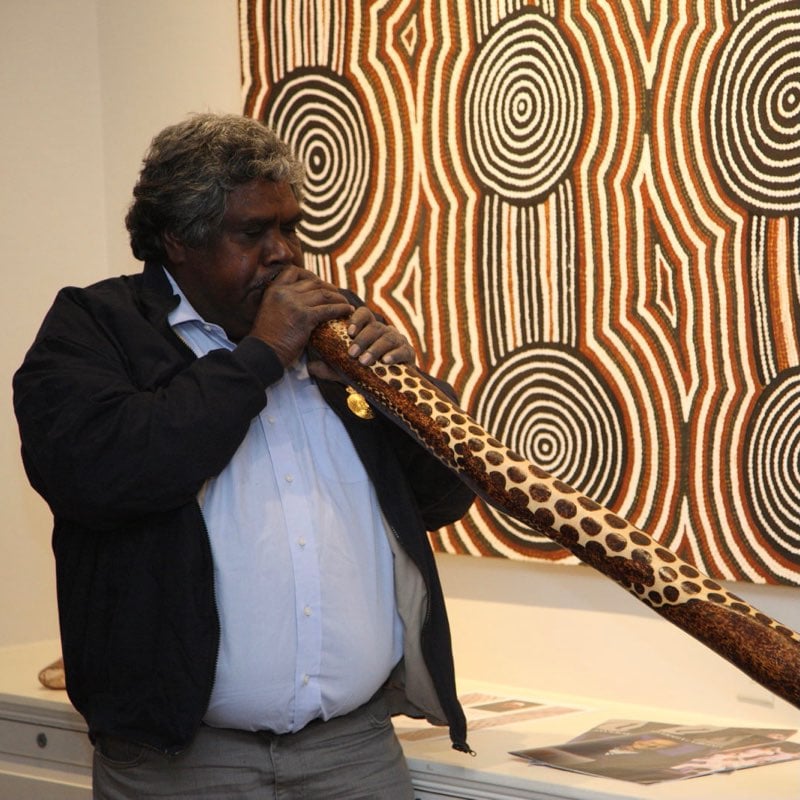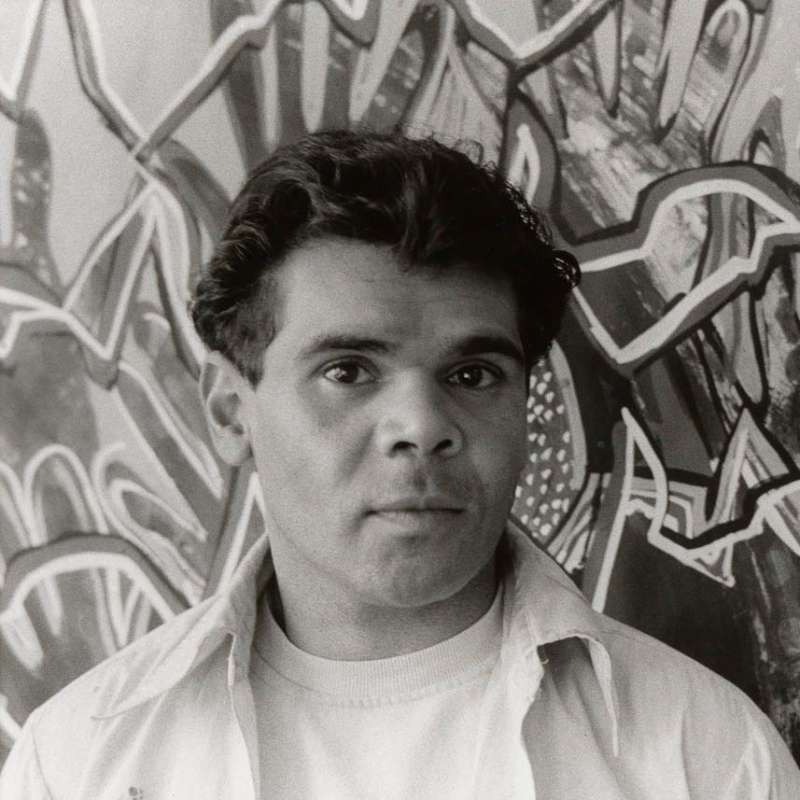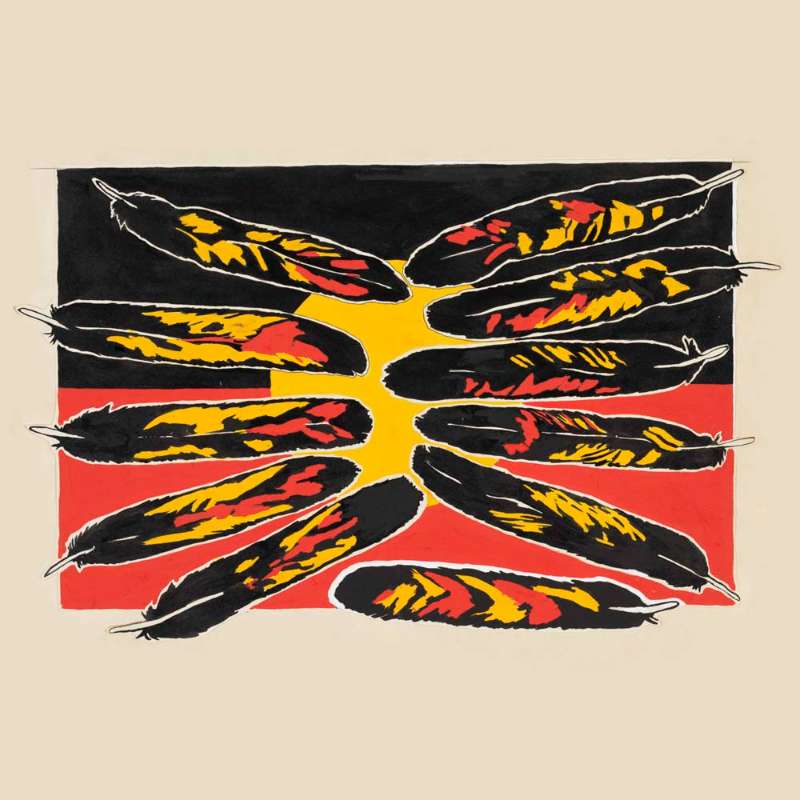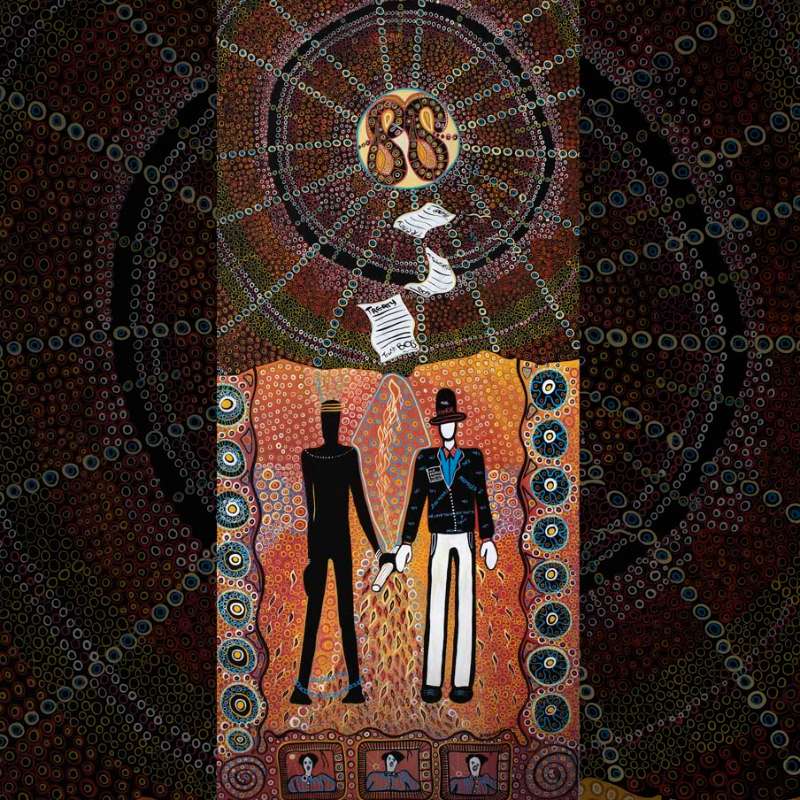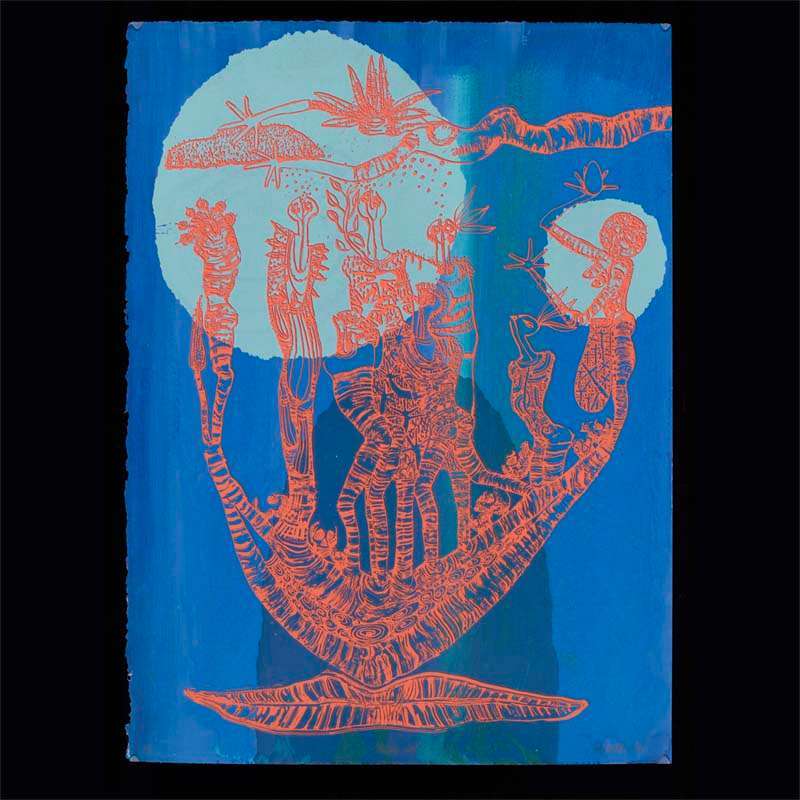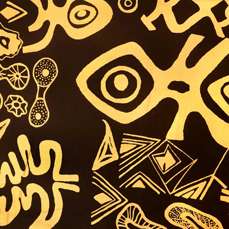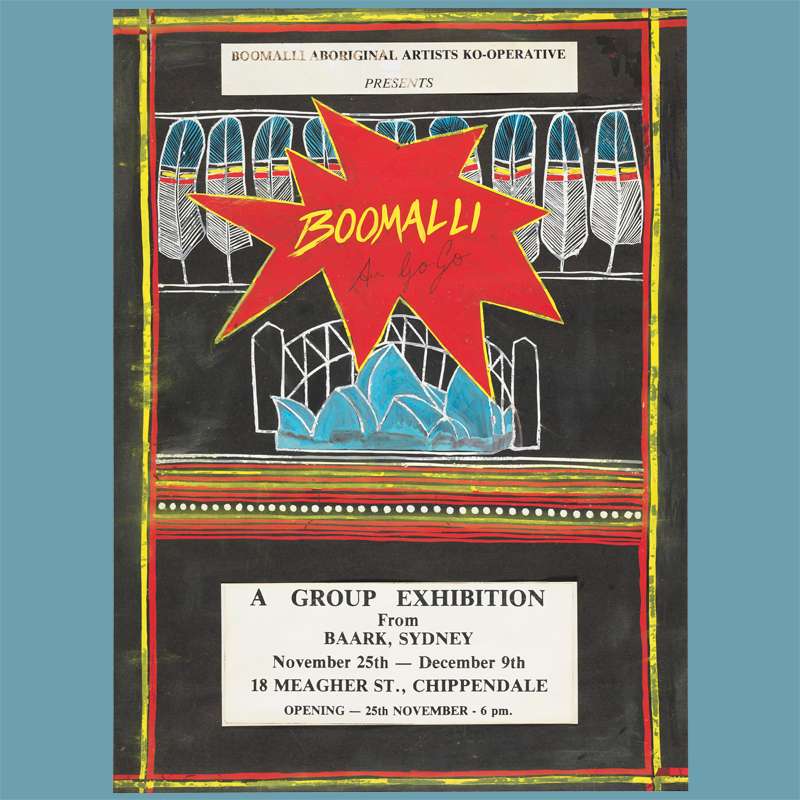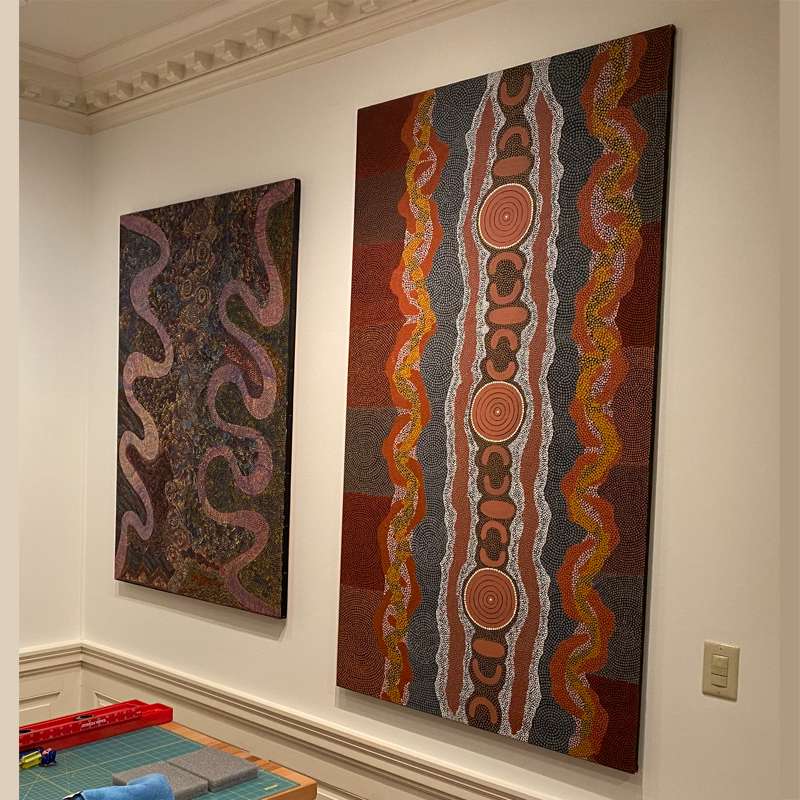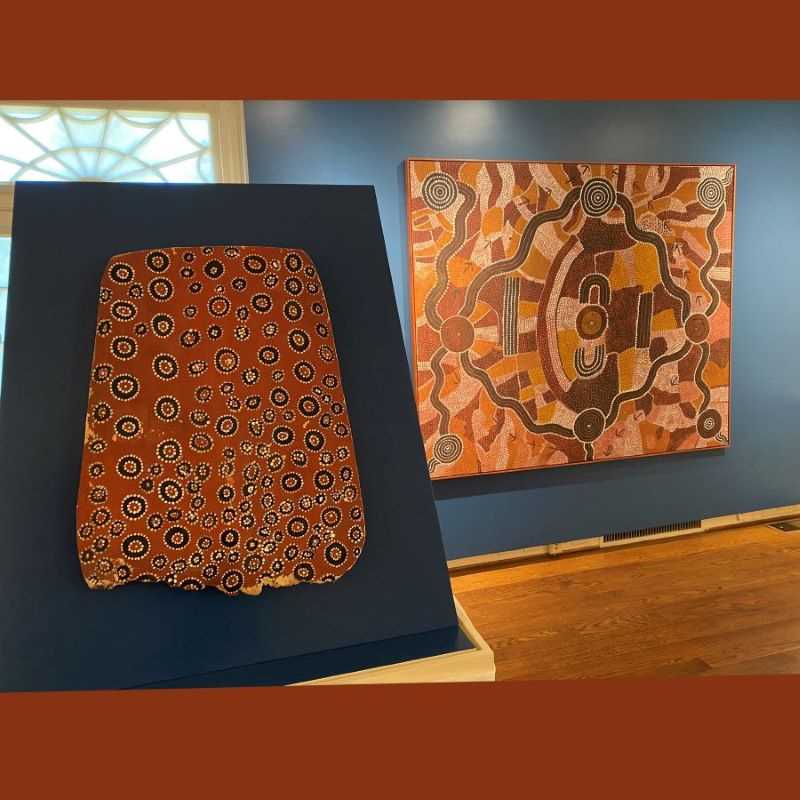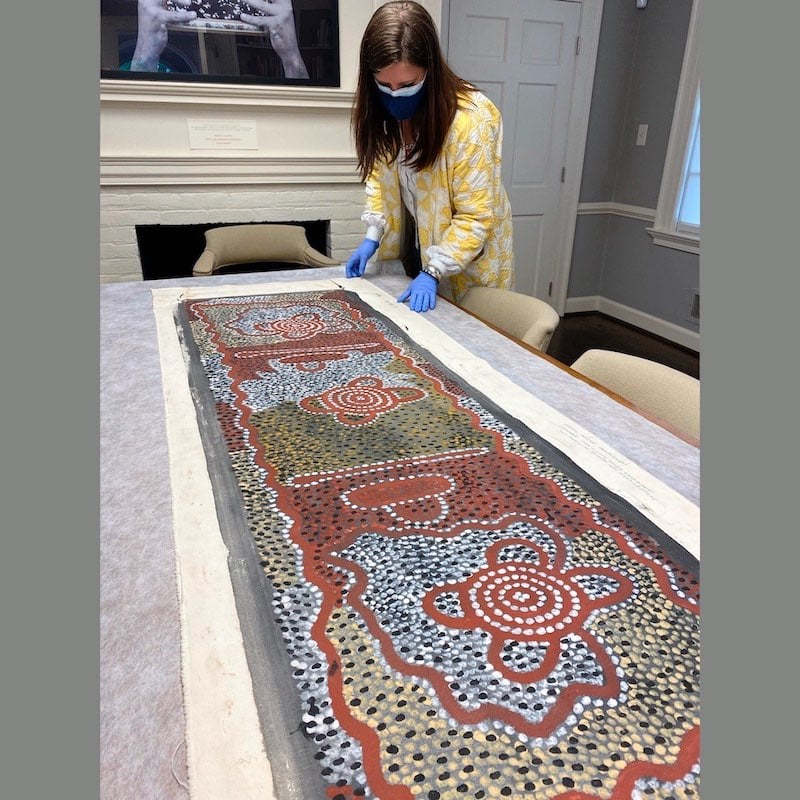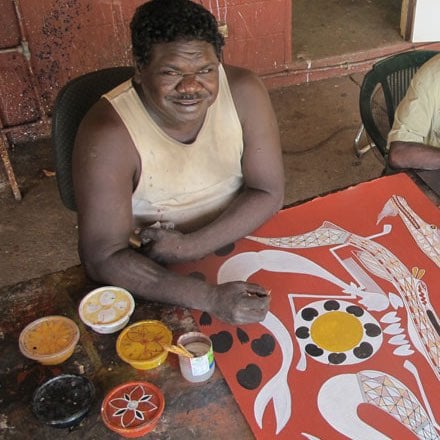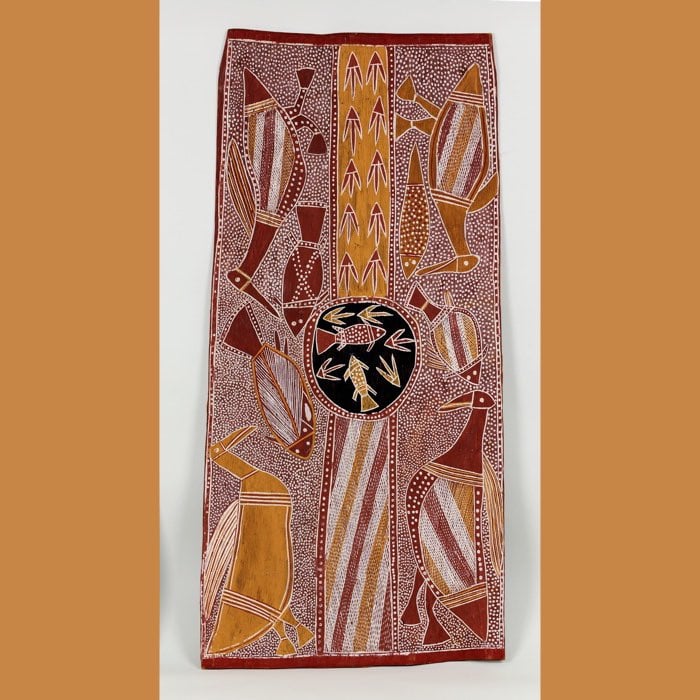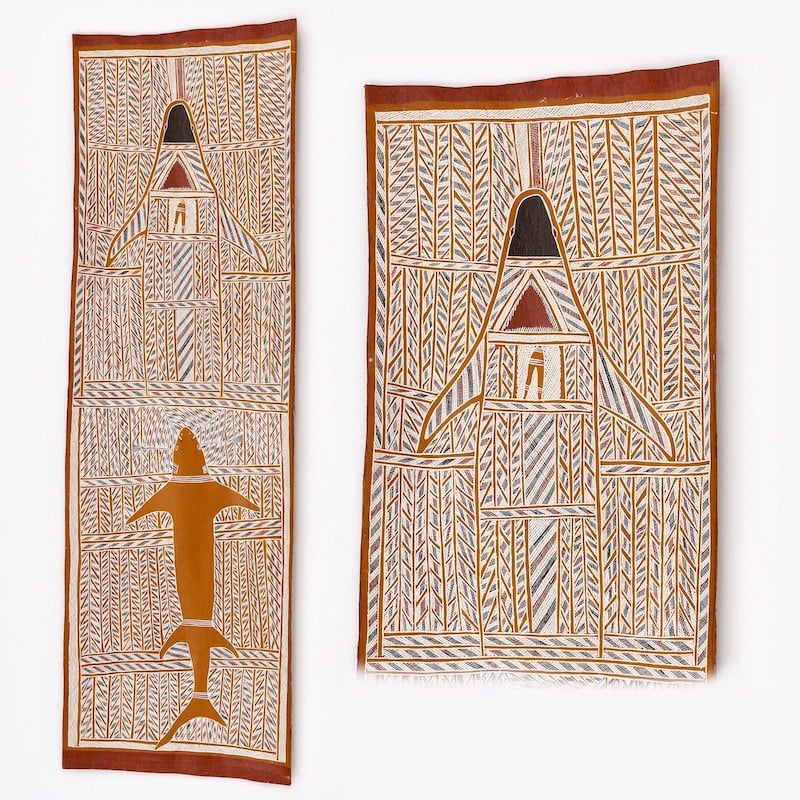Discover Aboriginal Art in America
Aboriginal Art in America

Aboriginal Art in America
Author: Kluge-Ruhe Aboriginal Art Collection and The Virginia Audio Collective
Subscribed: 1Played: 0Subscribe
Share
© 2021 University of Virginia
Description
Each week we spend a few minutes getting to know a work by an Indigenous Australian artist. We'll talk about medium, style, the evolution of Aboriginal art over its 50,000+ years, and the ways these works and artists transcend and translate the issues of the day from the other side of the world.
Aboriginal Art in America is made by The Kluge-Ruhe Aboriginal Art Collection, the only museum outside of Australia dedicated to the exhibition and study of Indigenous Australian art, and The Virginia Audio Collective.
Aboriginal Art in America is made by The Kluge-Ruhe Aboriginal Art Collection, the only museum outside of Australia dedicated to the exhibition and study of Indigenous Australian art, and The Virginia Audio Collective.
30 Episodes
Reverse
In 1997, artists from Tjuntjuntjara in the desert of Western Australia, formed the Spinifex Arts Project. Their goal was to create art that would serve as evidence in their legal battle to reclaim their land. Thanks to a generous gift, you can now view many of these pieces in a new exhibition titled "In the Beginning: Paintings by Senior Artists of the Spinifex Arts Project" on display at the Kluge-Ruhe Aboriginal Art Collection of the University of Virginia. In this episode, we learn about the Spinifex Arts Project and the pieces in the exhibition from its curator, Katina Davidson.
Simon Hogan painting. Photo by Amanda Dent courtesy of Spinifex Arts Project
More information about the exhibition and Kluge Ruhe: https://kluge-ruhe.org/exhibition/in-the-beginning-paintings-by-senior-artists-of-the-spinifex-arts-project/#exhibition
Art and storytelling allow sisters Dora and Jan Griffiths— Aboriginal artists from Western Australia—to maintain an unbroken line of culture from the past and carry it into the future.
Learn more: https://kluge-ruhe.org/
This week we introduce a new project from the Kluge-Ruhe made in collaboration with UVA Press. Curator Henry Skerritt dives into the history of the Papunya Tula Artists — a movement started in Northern Australia that is now celebrating its 50th anniversary. The Kluge-Ruhe’s current exhibit and launch of their new project both serve as a tribute to the Papunya Tula Artists who changed the face of global contemporary art.
Learn more about Papunya Tula: https://kluge-ruhe.org/exhibition/irrititja-kuwarri-tjungu-past-present-together-50-years-papunya-tula-artists/
Artist Marrnyula Mununggurr is well renowned in the Yonglu community for her warmth and creative genius. Her work will finally go on display in the United States this September with the the opening of “MAḎAYIN: Eight decades Aboriginial Australian Bark Painting from Yirrkala.” Mary Garner McGehee spoke with Kluge-Ruhe curator Henry Skerritt to get an inside look on Marrnyula’s work and creative process.
Learn more about MAḎAYIN: https://madayin.kluge-ruhe.org
Artist Djambawa Marawili came up with the idea for the exhibition "MAḎAYIN, Eight Decades of Aboriginal Australian Bark Painting from Yirrkala" over six years ago. Soon his vision will become reality when MAḎAYIN opens at the Hood Museum at Dartmouth in September. In this episode, Kluge-Ruhe curator Henry Skerritt introduces us to Djambawa Marawili and tells us the story of the birth of MAḎAYIN.
Learn more about MAḎAYIN: https://madayin.kluge-ruhe.org
https://kluge-ruhe.org/exhibition/boomalli-prints-paper-making-space-art-collective/
https://kluge-ruhe.org/exhibition/boomalli-prints-paper-making-space-art-collective/
https://kluge-ruhe.org/exhibition/boomalli-prints-paper-making-space-art-collective/
https://kluge-ruhe.org/exhibition/boomalli-prints-paper-making-space-art-collective/
As a collective, Boomalli helped to promote the idea of urban Aboriginal art. However, the ten artists had distinctive artistic and personal identities. The work in this exhibition cuts across multiple generations, sexual orientations, and language groups to defy both cultural and artistic expectations. The inclusive environment of Boomalli created a space for these identities to intersect. The spark lit by the founding members of Boomalli transformed what Aboriginal art could be, igniting a movement that spread across Australia.
Read more and make a free reservation: kluge-ruhe.org/exhibition/boomal…e-art-collective/
New Series alert!
The next few episodes in your feed will feature the new exhibit “Boomalli Prints and Paper: Making Space as an Art Collective.” In this episode we introduce the collective and the exhibit.
Read more and make a free reservation: https://kluge-ruhe.org/exhibition/boomalli-prints-paper-making-space-art-collective
Human figures, stenciled hands, and ancestral beings gather on the surface of this painting in a dynamic circle of ceremonial activity. Thompson Yulidjirri’s _Ngurlmarrk—The Ubarr Ceremony _is a work on paper crafted by the late artist as part of the John W. Kluge Commission of works on paper in 1991-1992 from Injalak Arts & Crafts Association. Yulidjirri's multimedia expertise across rock, bark, and paper is evident here in his depiction of the Ubarr Ceremony, as the patterned background resembles the rock walls of nearby Injalak Hill. Visualizing connections across media and time, Yulidjirri’s painting attests to the role art plays in evoking and transferring stories and knowledge to the next generation of artists and audiences.
Thompson Yulidjirri,
Ngurlmarrk—The Ubarr Ceremony 1990
Natural pigments on paper
150 x 100 cm
Kluge-Ruhe Aboriginal Art Collection
When Aboriginal Art started to explode in popularity in the 1980s, galleries, collectors, and museums were most interested in the major works on huge canvases. However, now that the art movement has achieved so much acclaim, collections like the Kluge-Ruhe are focusing more on the earliest works from important art centers like Papunya Tula. Curator Henry Skerritt shares what we learn about contemporary Aboriginal Art by studying the often anonymous works from the early days of Papunya Tula.
https://kluge-ruhe.org/exhibition/irrititja-kuwarri-tjungu-past-present-together-50-years-papunya-tula-artists/
The Kluge-Ruhe works very closely with Aboriginal artists and their descendants in designing their exhibitions. For this exhibit, Curator Henry Skerritt wasn't able to make his usual trip to Australia to meet with artists in person, so they solicited photos, stories, and input on the gallery from artists and descendants virtually. All which they've compiled for the accompanying exhibition catalog.
There aren't many female artists in the exhibit IRRITITJA KUWARRI TJUNGU: 50 YEARS OF PAPUNYA TULA ARTISTS. That's because when Papunya Tula was formed in the 1970s, there weren't many women working at Papunya Tula. Pansy Napangardi was an exception. She was one of the first women artists at Papunya Tula to get a great deal of international acclaim. We talk about her work and foreshadow the massive change that is to come when a new generation of female artists come to Papunya Tula in the 1990s and breathe new life into the art center.
The Kluge-Ruhe is opening a new exhibition! It's called Irrititja Kuwarri Tjungu (Past & Present Together): 50 Years of Papunya Tula Artists.
Papunya Tula is a collective of Aboriginal artists in The Australian Western Desert. In this episode, we get a sneak peak of the new exhibit and Henry Skerritt tells us why these paintings are so important to the history of Aboriginal Art.
And stay tuned! Over the coming weeks, we're going to share a lot more about this very special exhibit and the artworks on display.
Bush Tucker Dreaming, 1988
William Sandy
Acrylic on canvas
167.6 x 167.6 cm
Gift of John W. Kluge, 1997
Recently, the team at Kluge-Ruhe unrolled a canvas that had been sitting unseen in their collection for a long time. When they finally saw it, it got the team thinking about medium and the creativity that artists unleashed when they started to experiment with painting on canvas.
Dinny Nolan Tjampitjinpa
Men's Ceremony c.1974
Synthetic polymer paints on canvas
65 x 19 in. (165.1 x 48.26 cm)
Kluge-Ruhe Aboriginal Art Collection of the University of Virginia
Gift of John W. Kluge, 1997
1991.0021.013
Gabriel Maralngurra is an Aboriginal Australian artist from Gunbalayna in Western Arnhem Land. Gabriel enjoys speaking with others and sharing his own knowledge about painting and Aboriginal traditions so that his culture lives on. He maintains great relations with the curator of the Kluge-Ruhe Art Collection, Henry Skerritt, and virtually joined Skerritt's class in March of 2021 to share his wisdom with students at the University of Virginia.
Gabriel Maralngurra
Indigenous Australian, b. 1968
Episode produced by Sydney Pulliam.
The Waterbird Dance brings death to life. Aboriginal artist David Malangi Daymirringu’s work honors Yolngu ceremony; more specifically, that of the Manharngu clan. A well-known senior artist, Malangi painted and travelled internationally to represent his community and share his art until his death in 1999. In typical fashion of the art of Arnhem Land, Waterbird Dance is a painting of ochre, charcoal and white clay on bark. Malangi depicts Manharngu clan totems engaged in a transitional ceremony in a vibrant, packed composition to grab the attention of international audiences and celebrate and preserve the traditions of his country.
David Malangi Daymirringu
Aboriginal Australian, 1927-1999
Waterbird Dance
Natural pigments on bark
32 x 18 in. (81.28 x 45.72 cm)
This episode was produced by Callie Collins.
Wilson Manydjarri sees the patterns laid down in the landscape and conveys them through his art. In this episode, Henry Skerritt tells the story of how some of those patterns were laid down and the role that art like Manydjarri’s play in the most important moments of life for members of his indigenous group.


